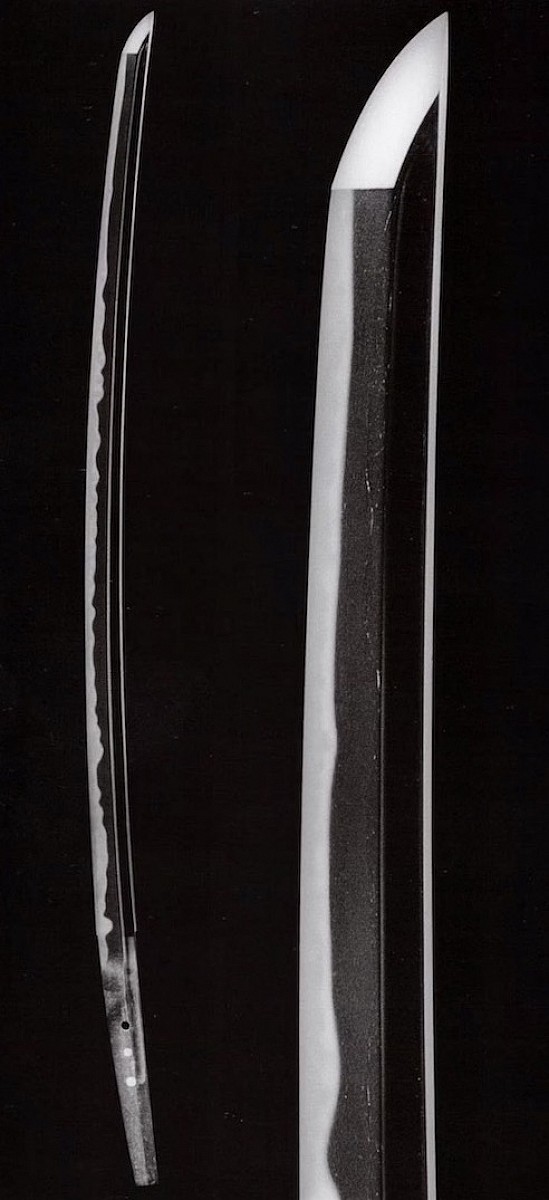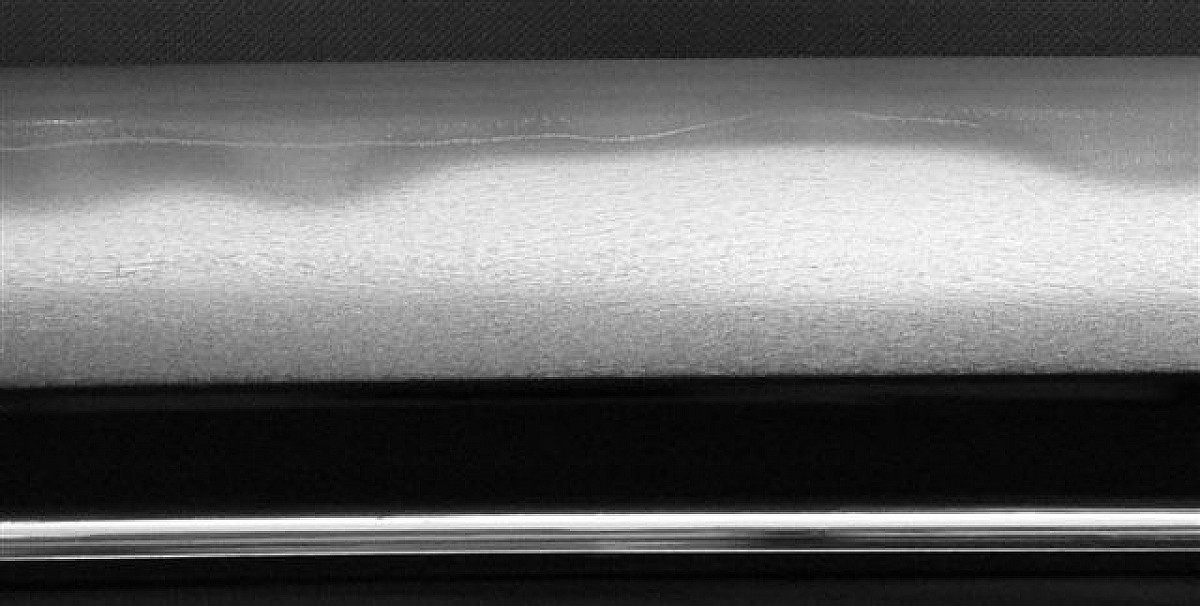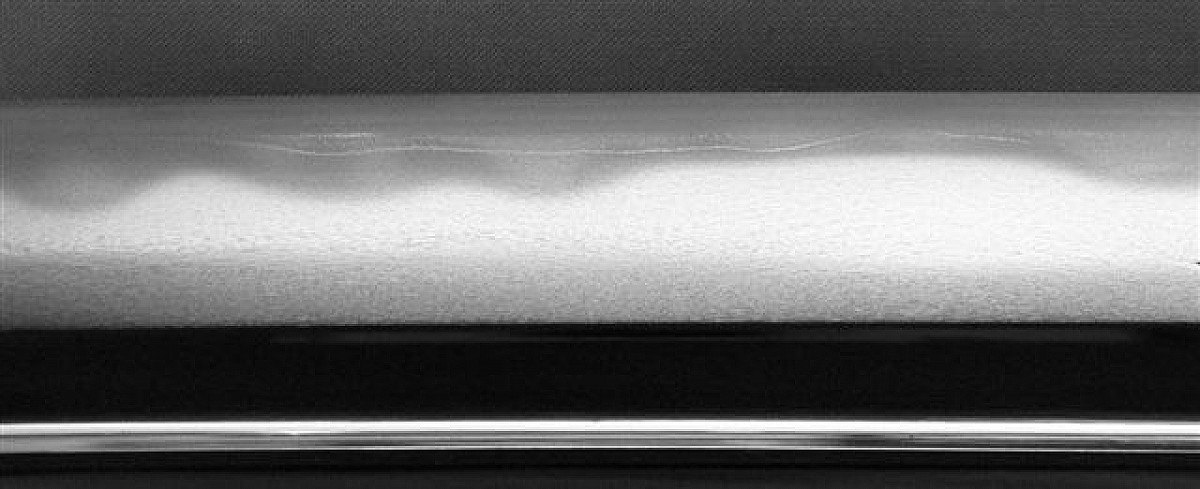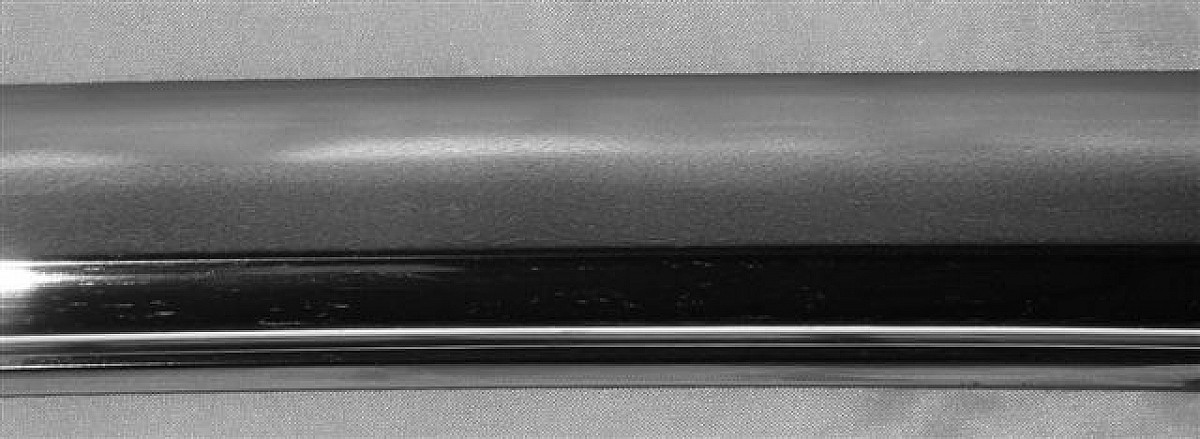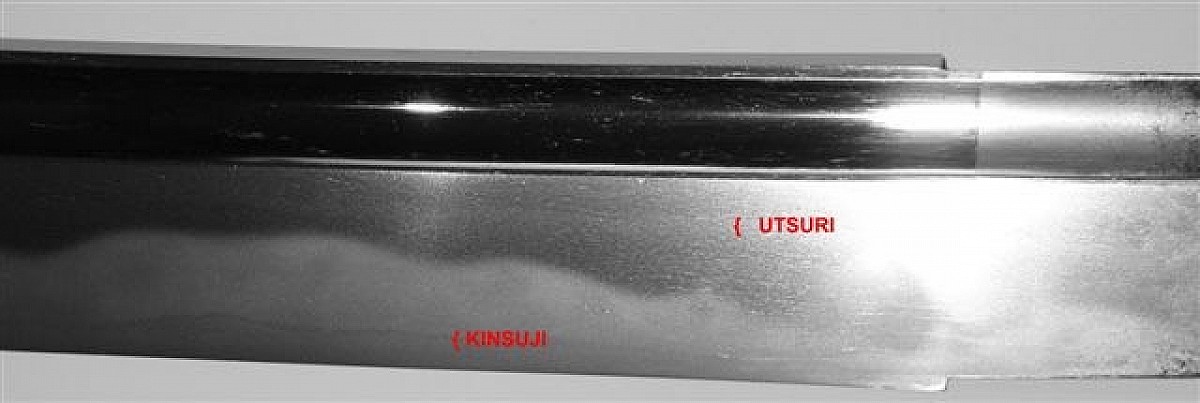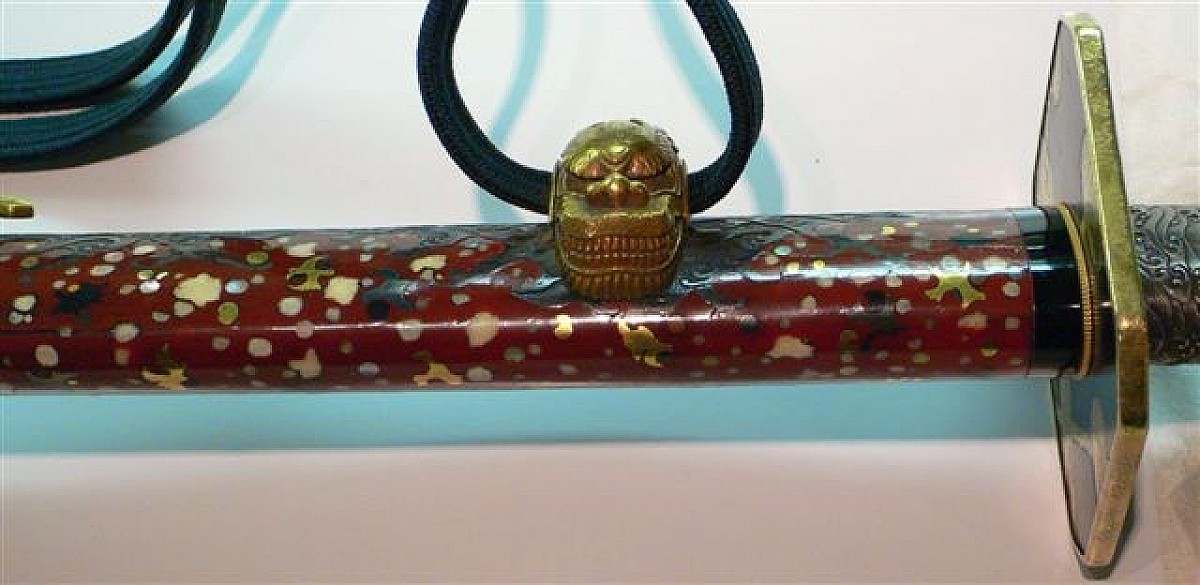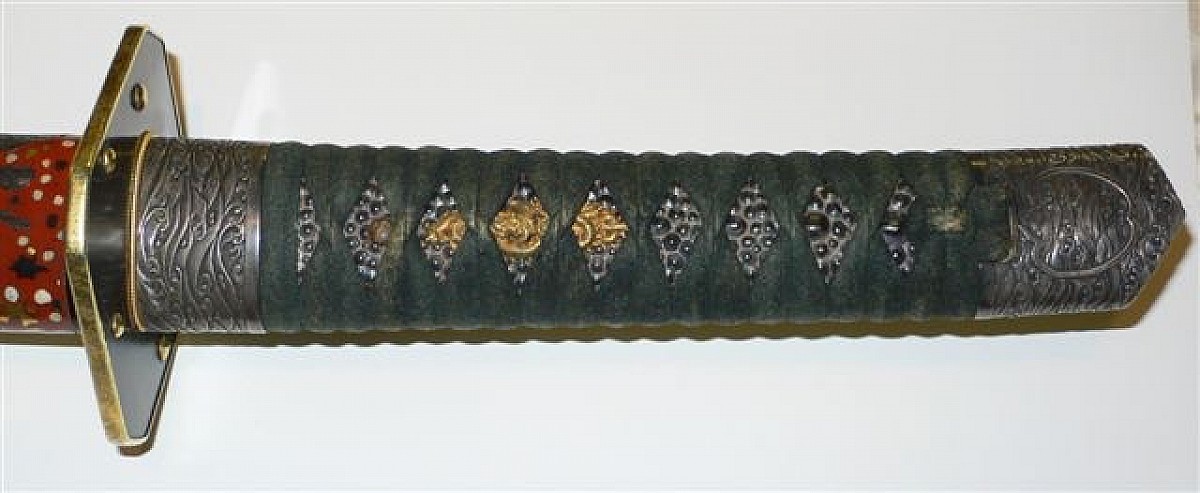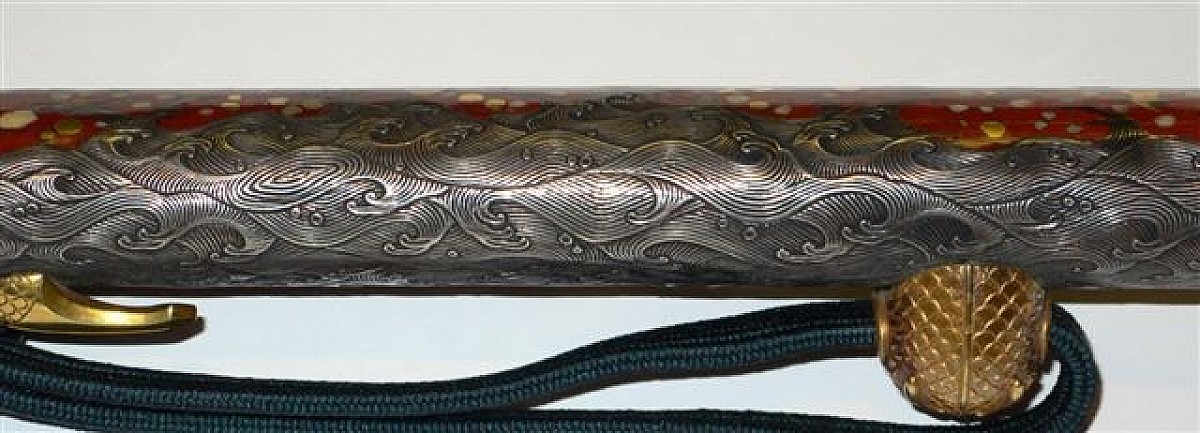Designated as Jūyō-tōken at the 45th jūyō-shinsa held on the 29th October, 1999.
Publication: NBTHK, Jūyō Tōken Nado Zufu, Volume 5; Dai Tōken Ichi Сatalogue of 2000, p. 59.
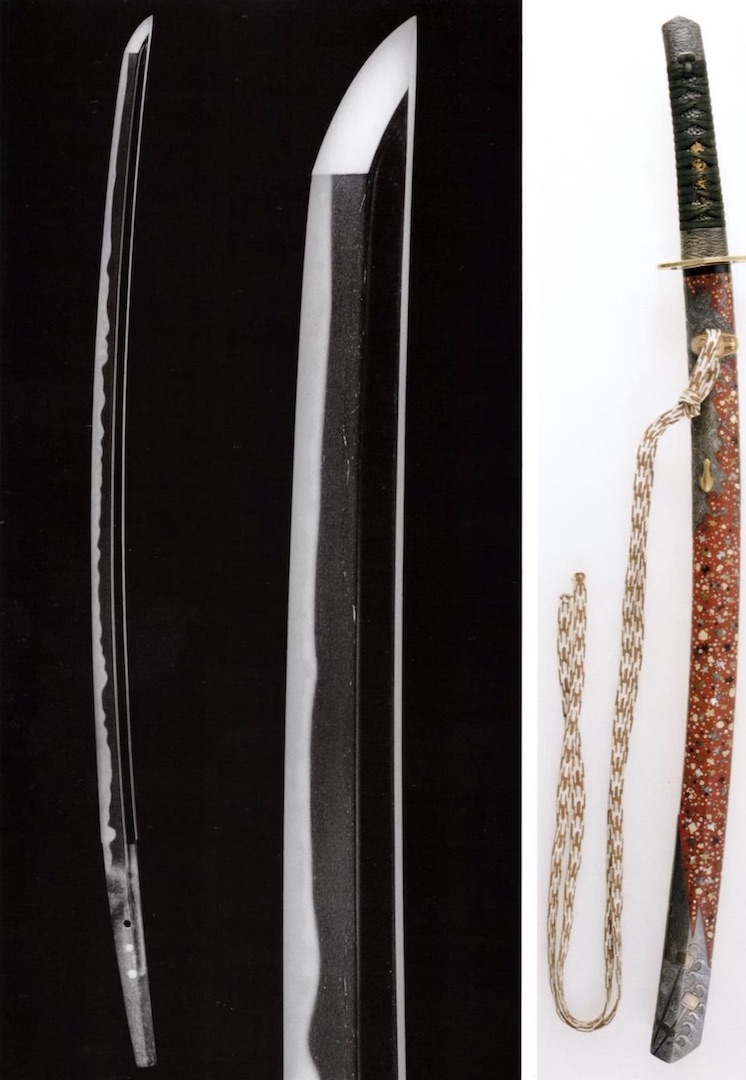
During the middle of the Kamakura period, Bizen-Den swordmaking was dominant, and saw the rise of great smiths in Fukuoka (Ichimonji), as well as Osafune (Mitsutada and Moriie). Mitsutada (光忠) is considered the founder of the Osafune (長船) School which would last into the Shinto period. Moriie (守家) is the founder of the Hatakeda (畠田) School though he seems to have worked in Osafune as well. Hatakeda is a town adjacent to Osafune or else a subdivision of Osafune itself. Moriie is ranked at saijo-saku by Fujishiro for grand-master skill levels, and is rated at 2,000 man yen in the Toko Taikan by Tokuno (1975). These place his level as equal to Rai Kunitoshi and Rai Kuniyuki.
«Moriie is called ‘Hatakeda Moriie’ since he lived in Hatakeda of Bizen Province, though there is no extant work of Moriie of which signature includes ‘Hatakeda-jū’. [However, there are] some extant works with ‘Osafune-jū’. Therefore it appears that Hatakeda was a section of Osafune Village or the Hatakeda School was merged with the Osafune School afterwards. It is natural that Moriie demonstrated a similar (and gorgeous) workmanship to those of Mitsutada and Nagamitsu of the Osafune School, but gunome and distinct kawazu-no-ko chōji are more emphasized in his hamon.» NBTHK Token Bijutsu.
Both Moriie and Mitsutada worked in similar forms to the Fukuoka Ichimonji smiths. They make a florid choji-midare hamon with utsuri, and the sugata is masculine with a squarish ikubi kissaki and a wide body throughout the blade. Moriie is famous for a particular style of chōji where the head of the chōji separates off from the body underneath it (tadpole chōji, or kawazu-no-ko [蛙子] ). His forging follows a style of itame that stands out clearly.
«Moriie is a representative smith of this school [Hatakeda], and is a famous person who should be compared in stature with Mitsutada. [...] It is said that the large mei are the shodai, and the small mei are the nidai, but even if it is one with a small mei like the one in the Tokyo National Museum, they are splendid works that are not inferior to those with a large mei. [...] As for the mei on the pieces that are thought to be by the shōdai, there are three types: Moriie, Moriie tsukuru, and Moriie (kaō).» The Nihontō Koza.
Moriie's father is said to be a smith called Morichika (守近) of the Fukuoka Ichimonji School, but this smith's works are now lost. Moriie would give his name to several following generations, as well as teaching other master smiths such as Sanemori (真守) and Morishige (守重). Sanemori left dated work of 1277 and 1289, and is supposed to be a son or grandson of Moriie. Morishige's student was Motoshige (元重), the second generation of which would also be very famous and is thought to be one of the Sadamune no Santetsu (貞宗三哲, three great students of Sadamune).
As for Moriie, there are some arguments as there usually are between first and second generation work, with some advocating for one smith and others for a two smith theory. The difference is that the second generation is sometimes thought to mostly sign in a smaller signature. Tanobe sensei does not necessarily agree with this partitioning only on the size of the signature. However it is more strongly held that a long signature style starting with Osafune-jū is certainly work of the second generation.
«It seems evident, therefore, that the size of the mei does not necessarily determine as to which generation Moriie's works belong to. Some say the different sizes all represent one and the same smith at different times. This point needs clarification pending further research.» Tanobe Michihiro, NBTHK Token Bijutsu.
There are dated works ascribed to the second generation which place him close to 1280, so the first generation or at least the first period of Moriie corresponds to a time around 1259 as is found in old books. Some have three Kamakura generations of Moriie, and in that case his work may begin as early as 1232. Second generation work can also be singled out by a slender shape to the sword as well as a hamon based more on gunome than on chōji. These are features more similar to Nagamitsu, with the shodai's work being more similar to Mitsutada. The NBTHK has in the past separated Moriie generations by denoting works of Moriie (implicitly the first generation), then explicitly noted second generation, and all others are marked as a group of “later generation” works.
HATAKEDA SANEMORI
Sanemori (not to be confused with Hōki Ōhara Sanemori 伯耆大原真守) is sometimes said (according to Fujishiro Yoshio for example) to be the son of Hatakeda Iesuke (家助), who was a son or grandson of Moriie according to some books. This information does not appear to be correct, as these authors did not have access to dated works and were handing down traditional knowledge. At birth, Sanemori was given the name Yajirō (弥次郎).
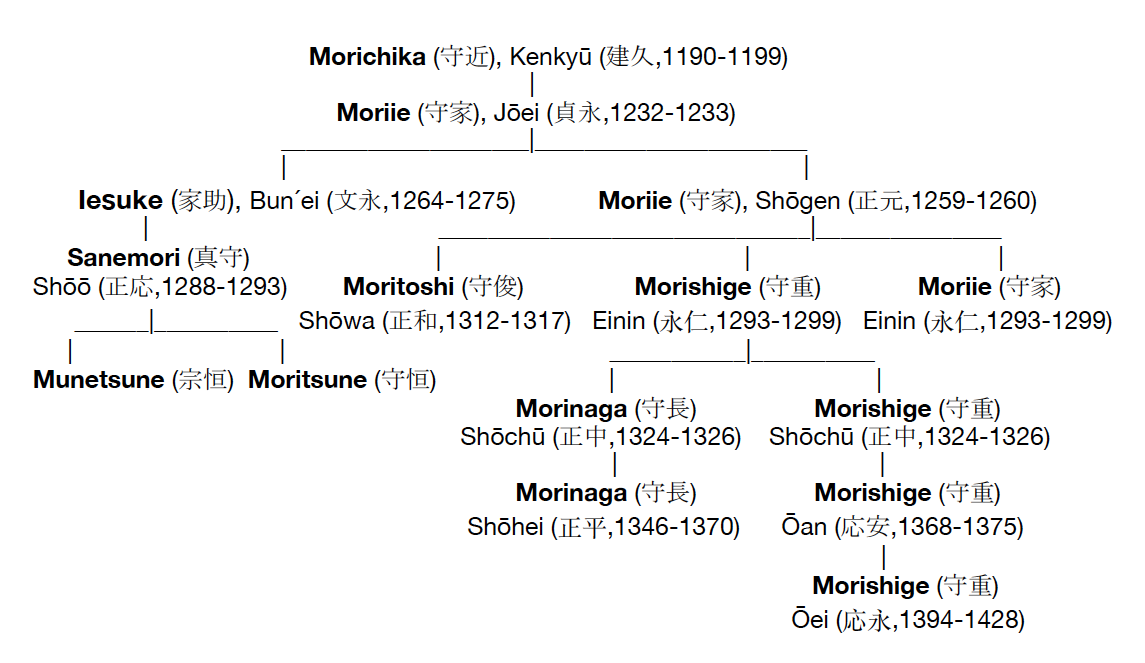
Figure 1. Genealogy line extracted from the Kōsei Kotō Meikan (校正古刀銘鑑), 1830.
«His workmanship shows as a flamboyant chōji-midare which is mixed with gunome and chōji but also suguha is seen. Generally, he applied mostly a slightly more lenient workmanship than his father Moriie.» NBTHK, Jūyō Tōken Nado Zufu.
As can be seen from the reference above, current scholarship has corrected his time period and he is now considered to be a son of Moriie. This is confirmed by have dated works from the Kōan (弘安, 1278-1288) and Shōō (正応, 1288-1293) eras. Specifically these swords are a Jūyō tachi with a 1277 date, and a Tokubetsu Jūyō tachi with a 1289 date. These dated works place him about 30-40 years earlier than some books have. This conclusion is actually backed up by the oldest sword books such as the Funki Ron (粉寄論, 1596–1615) which names him as the second son of Moriie as do some other books. Currently the “two generation” theories are being disassembled over many smiths, including Moriie with the understanding that style changes are evolution during a smith's life rather than abrupt transfer of the name to a new generation.
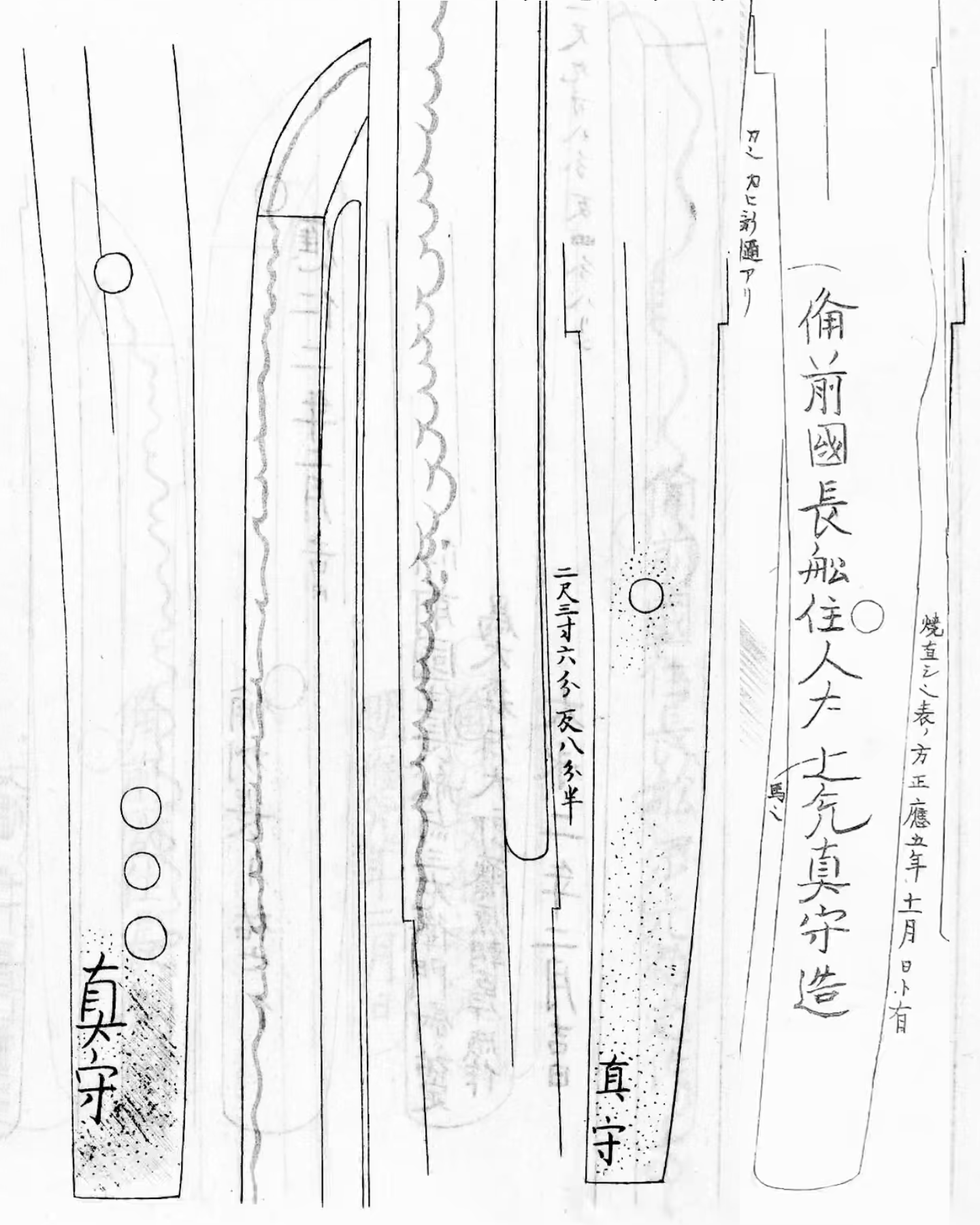
Figure 2. Sanemori's signatures variants extracted from the Tsuchiya Oshigata (土屋押形), 1926 and from the Kōzan Oshigata (光山押形), 1967.
«From the chronological point of view, the presence of a tachi of Moriie (dating from Bun'ei 9th - 1272) and its confirmed attribution to Moriie's nidai seems to make it reasonable to consider Sanemori contemporary of nidai Moriie, and thus supports the proposition in the Funki Ron that Sanemori was a son of shodai Moriie. It is most interesting to note that of Moriie's mei consists of two types: ones with extended chisel strokes with the last dot cut crossing the transverse stroke just above it and others in compact chisel cut without the last cut touching the transverse stroke. The latter type happen to closely resemble the kanji «MORI» as inscribed by Sanemori.» Tanobe Michihiro, the English Token Bijutsu.
He signed similarly to his father, with Sanemori Zo and in simple niji-mei as Sanemori, but two long signature works exist that gives us his personal name Samanosuke (左馬允, this can also be read as Samanojō). One blade is signed «Bishu Osafune-jū Samanosuke Sanemori», and it also shows how the Hatakeda smiths got absorbed into the Osafune School. The blade is similar in form to Nagamitsu, and is dated, but unfortunately the nengo cannot be read due to erosion. The other is one of the dated works, 1289 which aligns with the period of Nagamitsu and also shows a Nagamitsu style of hamon. This blade is signed «Bizen Kuni Osafune-jūnin Samanosuke Sanemori zo». So these seem to represent the end period of his work, due to the style change matching what was happening in Osafune at the type, as Nagamitsu moved from Mitsutada's chōji style into gunome and suguba.
Sanemori's earlier work though looks like his father and is based in chōji-midare, some of it is ō-chōji but more of it is in smaller patterns with intense activities in the hamon. Fujishiro ranked him as jōjō-saku for highly superior skill, but a step below the grand master Moriie. Today we have 43 works of his that passed Jūyō, four of which went on to Tokubetsu Jūyō. Of those Tokubetsu Juyo, three were owned by the Shimazu, the Kishū Tokugawa, and the Iyo Saijo Matsudaira. There are another 5 Jūyō Bijutsuhin, 6 Jūyō Bunkazai, and two of those were actually Kokuhō in the pre-war period. Of these blades, one of the Jubi was owned by the Kuroda Shi, one of the Juyo Bunkazai belonged to the Honda clan, and another to the Asano clan. All of this is testimony to very advanced skill and high regard for his work as well as a fairly rare representation among swords available to collect.
The sword presented here is a very important item for research purposes, it shows very well the characteristics of the Hatakeda school but on top of that, the slightly more elegant and gorgeous workmanship by way of comparison to Moriie is very typical for Sanemori and backups the handed-down designation to this craftsman. The condition is very good and the sword is outstanding among all Sanemori’s works.
Author: Darcy Brockbank (published on www.yuhindo.com).
Edition and Supplements: Dmitry Pechalov.
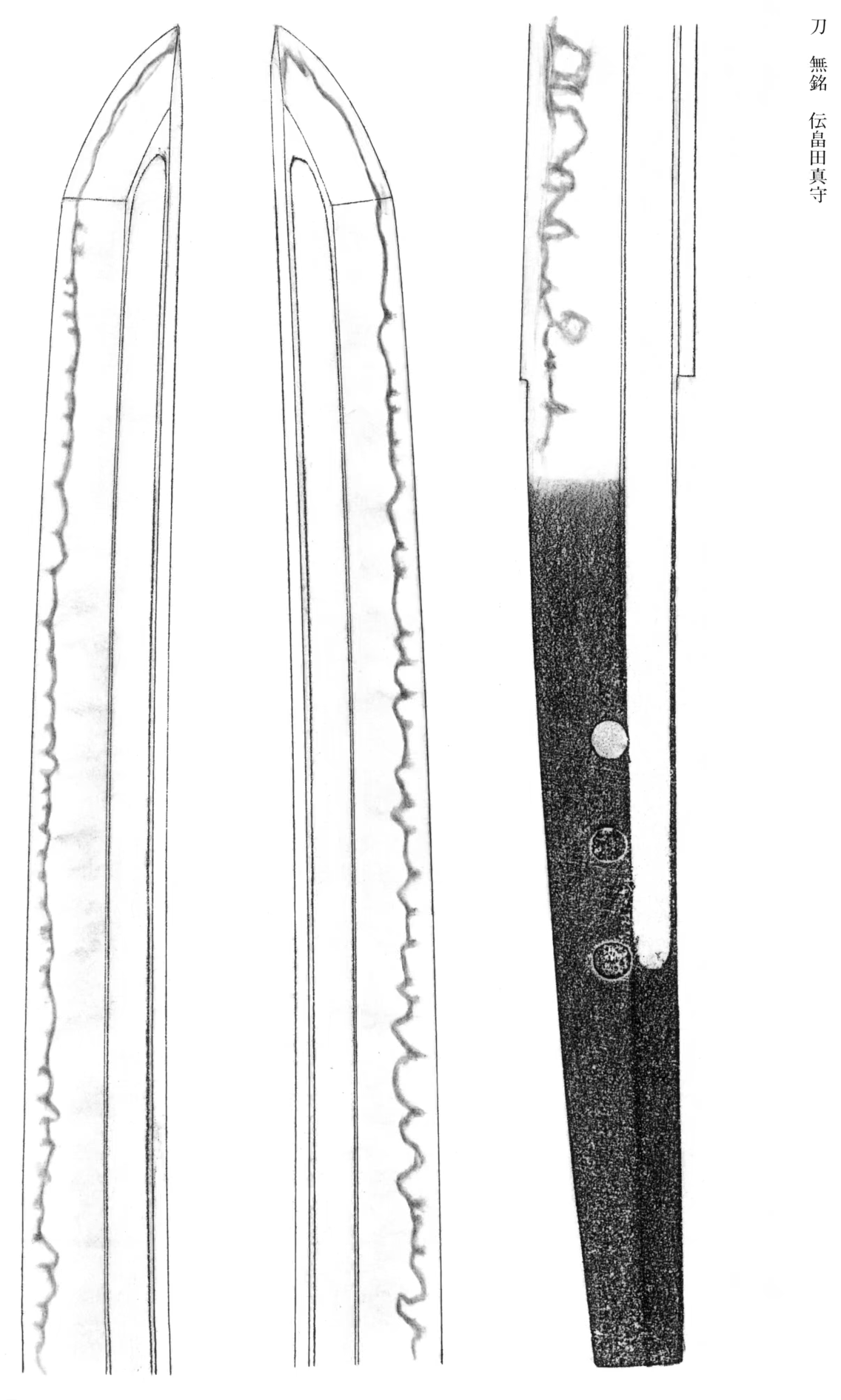
Jūyō setsumei translation
Designated as Jūyō-tōken at the 45th jūyō-shinsa held on the 29th October, 1999.
Katana: mumei, attributed as Den Hatakeda Sanemori (伝畠田真守).
Measurements: nagasa – 67.10 cm; sori – 1.70 cm; motohaba – 2.90 cm; sakihaba – 1.90 cm; nakago sori – 0.10 cm; nakago nagasa – 18.80 cm.
Sugata: the blade is in shinogi-zukuri, iori-mune, mihaba with rather normal shallow sori, chū-kissaki.
Kitae: the dense ko-itame hada with mixed-in nagare hada, ji-nie and midare-utsuri.
Hamon: the gunome hamon with mixed-in chōji and ko-itame and partially kawazu-no-ko like elements, abundant of ko-nie and kinsuji.
Bōshi: the sugu with round and shallow kaeri, on the omote side a little amount of nijuba.
Horimono: on both sides bo-hi which ends in a maru-dome at about the middle of the nakago.
Nakago: ō-suriage, kuri-jiri, sujijikai-yasurime, three mekugi-ana where two are plugged, mumei.
Smith: Sanemori of the Hatakeda School.
Period: Middle of the Kamakura period (1275)
Explanation: It is said that Hatakeda Sanemori was the son of Moriie and his active time was (what can be judged from extant pieces with dated signature) about the Kenji (建治, 1275-1278), Kōan (弘安, 1278-1288), and Shōō (正応, 1288-1293) eras. Generally he signed with just a niji-mei but also examples with a long naga-mei are extant, for example “Bizen no Kuni Osafune-jūnin sama no suke Sanemori tsukuru”. His workmanship shows a flamboyant chōji-midare which is mixed with gunome and chōji but also suguha is seen. Generally, he applied mostly a slightly more elegant workmanship than his father Moriie.
This katana has a very well and densely forged ko-itame-hada with mixed-in nagare-hada and standing-out midare-utsuri. The hamon is a gunome with chōji and ko-notare elements which partially narrows down at the waist and becomes kawazu-no-ko-chōji.
* * * * *
This sword was the family heirloom of the Naruse (成瀬) clan of Inuyama (犬山) castle, retainers of the Matsudaira (松平) clan.
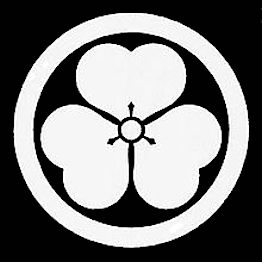
The Naruse-shi were a family of the Japanese nobility (Buke), which was derived from Fujiwara Tadamichi (藤原忠道; 1097–1164). Masakazu (正一; 1538-1620) served Tokugawa Ieyasu. Masanari (正成; 1567–1625), the eldest son, received Kurihara Domain (栗原藩) in the Shimousa Province after the battle of Sekigahara with an income of 34,000 Koku. He served the Tokugawa in Nagoya and was commissioned in 1616 with the leadership of Inuyama Castle including fiefdoms with an income of 34,000 Koku. His eldest son and his descendants lived there until the end of the Tokugawa period. In 1868 the head was given the daimyo rank, after the Meiji restoration the title Vice-Count.
Inuyama Castle (犬山城, Inuyama-jō) is a yamajiro-stye Japanese castle located in the city of Inuyama, Aichi Prefecture, Japan. The castle overlooks the Kiso River, which serves as the border between Aichi and Gifu Prefectures. Inuyama Castle is one of only 12 Japanese castles to remain unreconstructed from the end of the Edo period. The site has been protected by the central government as a National Historic Site since 2018.
1469 Oda Hirochika (織田広近) constructed the Inuyama Castle,
1537 Oda Nobuyasu (織田信康) became the lord of the castle, at that time, the central tower was just two stories tall.
1544 Nobuyasu died in battle atop Mt. Inabayama (the location of Gifu Castle.) Oda Nobukiyo (織田信清) became lord of the castle.
1547 Ikeda Tsuneoki (池田恒興) became the lord of the castle.
1600 The Ogasawara clan (小笠原氏) were transferred here.
1607 The Hiraiwa clan (平岩氏) were transferred here.
1611 For the following six years, the castle was without a lord.
1617 The Naruse clan (成瀬氏) were transferred here. The castle underwent its final expansion, and thus attained its final form.
1871 The castle was decommissioned. All buildings were removed except for the main tower.
1891 The South-East attached turret of the main tower was damaged in an earthquake.
1935 The main tower was designated Nation Treasure status and again in 1952 following amendments to the criteria.
1965 During a complete restoration of the castle, the main tower was dismantled & no evidence could be found to support the theory that the main tower had been transferred from Kanayama as had been previously believed.
2004 The Naruse family relinquished possession of the castle.
An additional information can be found on: https://en.wikipedia.org/wiki/Inuyama_Castle.

Koshirae: The red lacquered saya made in kairagi-zame (梅花皮鮫) style - a very rare, complicated and expensive method looks like of same wrapping with conspicuous insertions that resemble plum blossoms. This is a special raden (螺鈿, pearl) denchū-kojiri (殿中鐺) uchigatana-koshirae, came into fashion amongst some daimyō who had their tantō pair were mounted in way so-called duty-koshirae for accomplishing official duties at the inners part castles during the Edo period time, where daitō swords were not allowed. Hozon-tōsōgu certificate.
